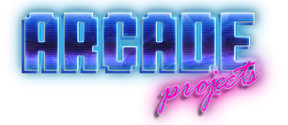Here's what I learned about convergence.
First rule : Give yourself a good documentation before preparing to spend weeks of trial and error to get something better than what you can achieve with strips.
Second rule : mark eveyry magnet and ring with a sharpie to restore original position and save 90% of time
Third rule : patience and self control.
I give you in the order of what I suggest you care about first. But I believe it's the opposite order when they did it in factory.
1. Factory magnets : There are many types. Circles glued on the tube, strips, ferrites around the yoke's plastic, ferrites taped inside, etc... in theory you should keep them in place. But practically most of them are fried, and they just make things harder when they mess instead of converging. In case you can't achieve a good enough picture and you want to be black belt in convergence, they simply need complete removal and start from scratch. Sometimes some magnets missing magnets on the yoke or on the tube itself. It gives you a picture of the complexity of all these things. Just start looking where some are missing or not but don't remove anything in the first step.
2. Corners convergence : it can be achieved with strips and small magnets on the tube, also with yoke's position but don't move it, because it's the first step when they do it in factory, so you want to move that in last resort, if it's snug don't touch it unless you want to start from scratch. It's a matter of 1 hour before achieving a good enough improvement.
3. Dynamic convergence : when you have overlapping colors on the sides it means the yoke isn't properly tilted left/right or down/up, you want to check if wedges are stil glued and yoke haven't been unscrewed by someone. If wedge is missing it means yoke has moved, just unscrew gently the yoke and try to replace one in the same position, it can be fixed in 2 hours also with a good mirror, but you would make sure the rings a tight.
4. Static convergence : it's a combination of yoke position 2 exterior sets of magnets which achieve Red/Blue alignement, and Red+Blue/Green alignement, this is also something you don't want to touch if center is perfectly white and symetrical. Mark the rings with a sharpie or you will regret not doing that.
5. Purity : If you have visible problems on raster, it means you have purity problem, either the yoke isn't in the right position, or purity magnets need tweaking, or you lost some glued magnets on the tube. Sometimes purity can change depending on the orientation of your cabinet. This can fix purity but if you have failing magnets still around it's not the right thing to do.
Lots of frustration and meditation when you want perfect geometry, the more you start again the more you understand the physics, it definitely need both understanding and lot of experience and luck. Also greediness make things more frustrating, but I believe this is how you learn. I spent a lot of time doing this, and still not happy, I just accept it when I reach my patience limit. Sometimes I take a pause and enjoy it like that before taking another breath to start messing again another inspired day. I get faster and improve on this exercise each time by the way.
But believe me you want to pick a properly converged tube from the beginning, you just have to know your limit or you will play with tweaking more than the arcades.
Also if you have pure white but still have geometry deformation, it can be the chassis.
Good luck !

